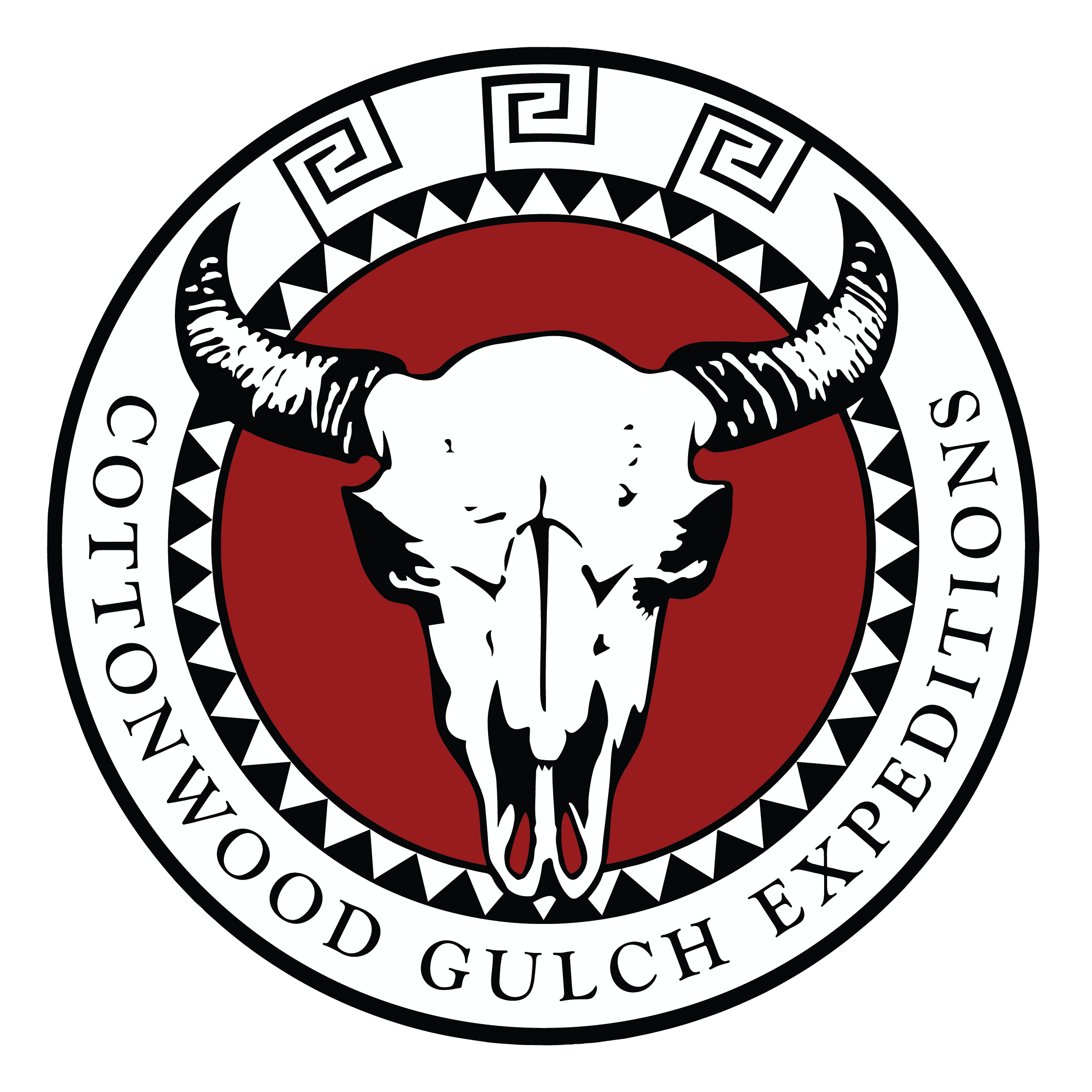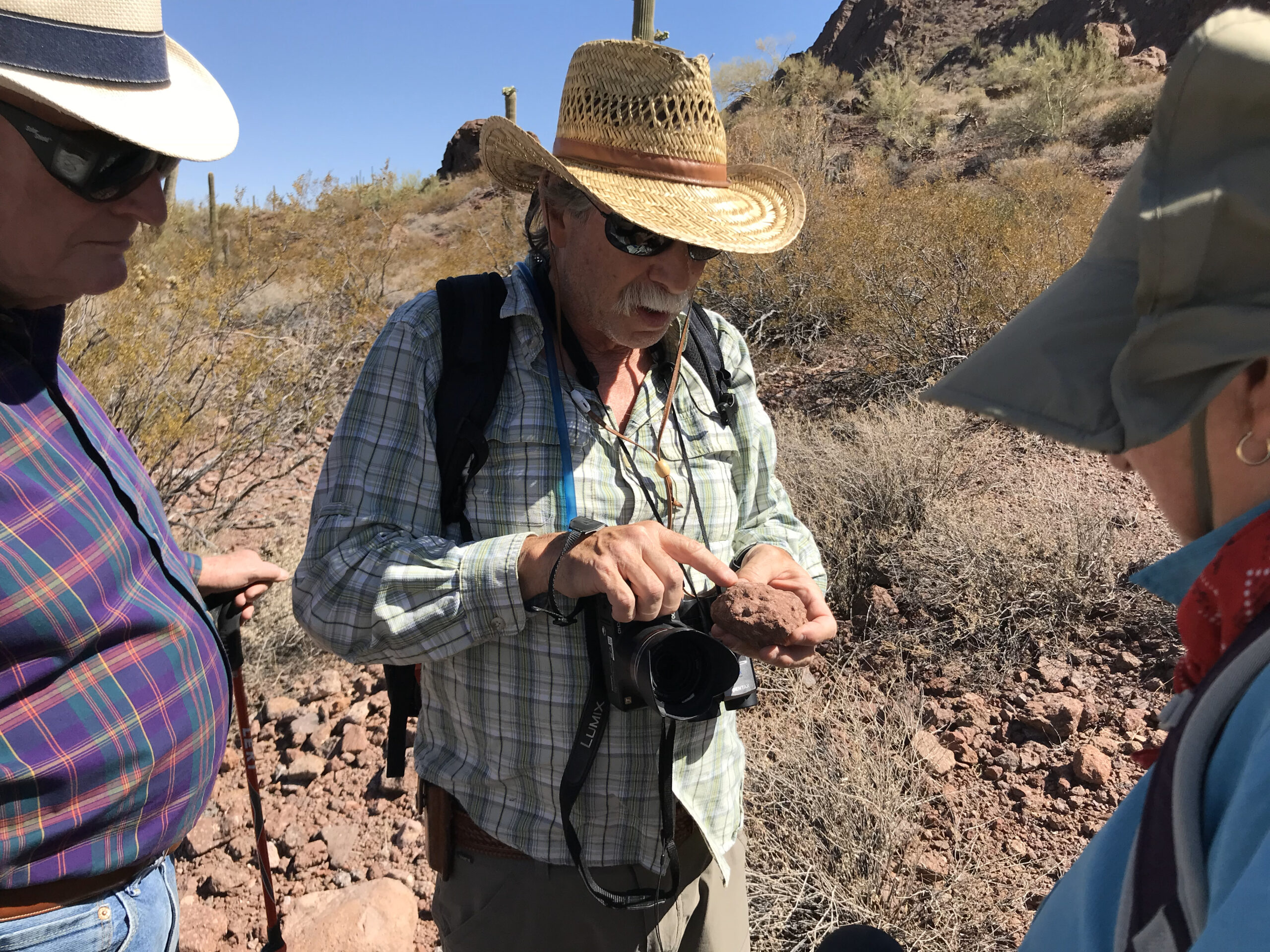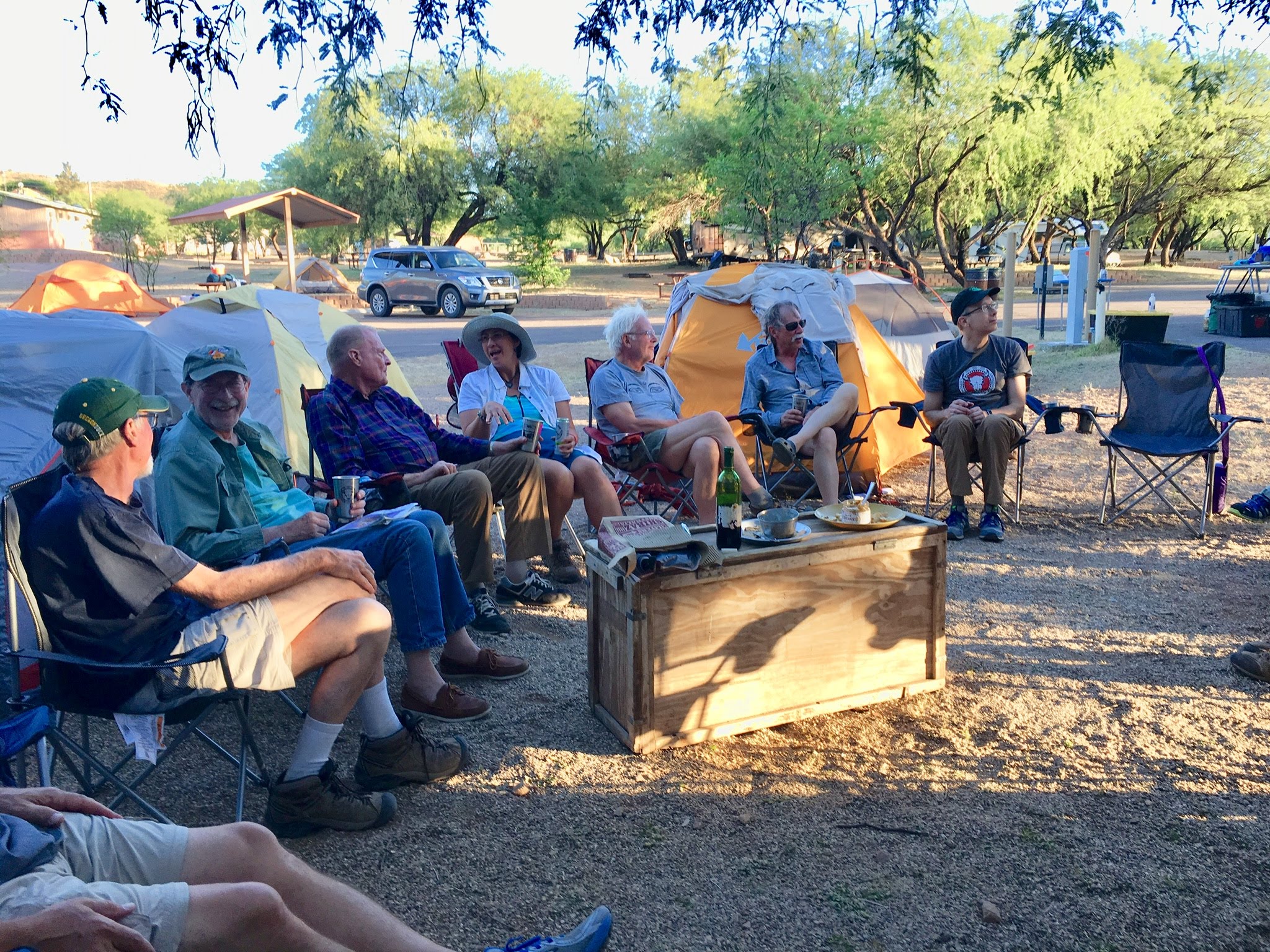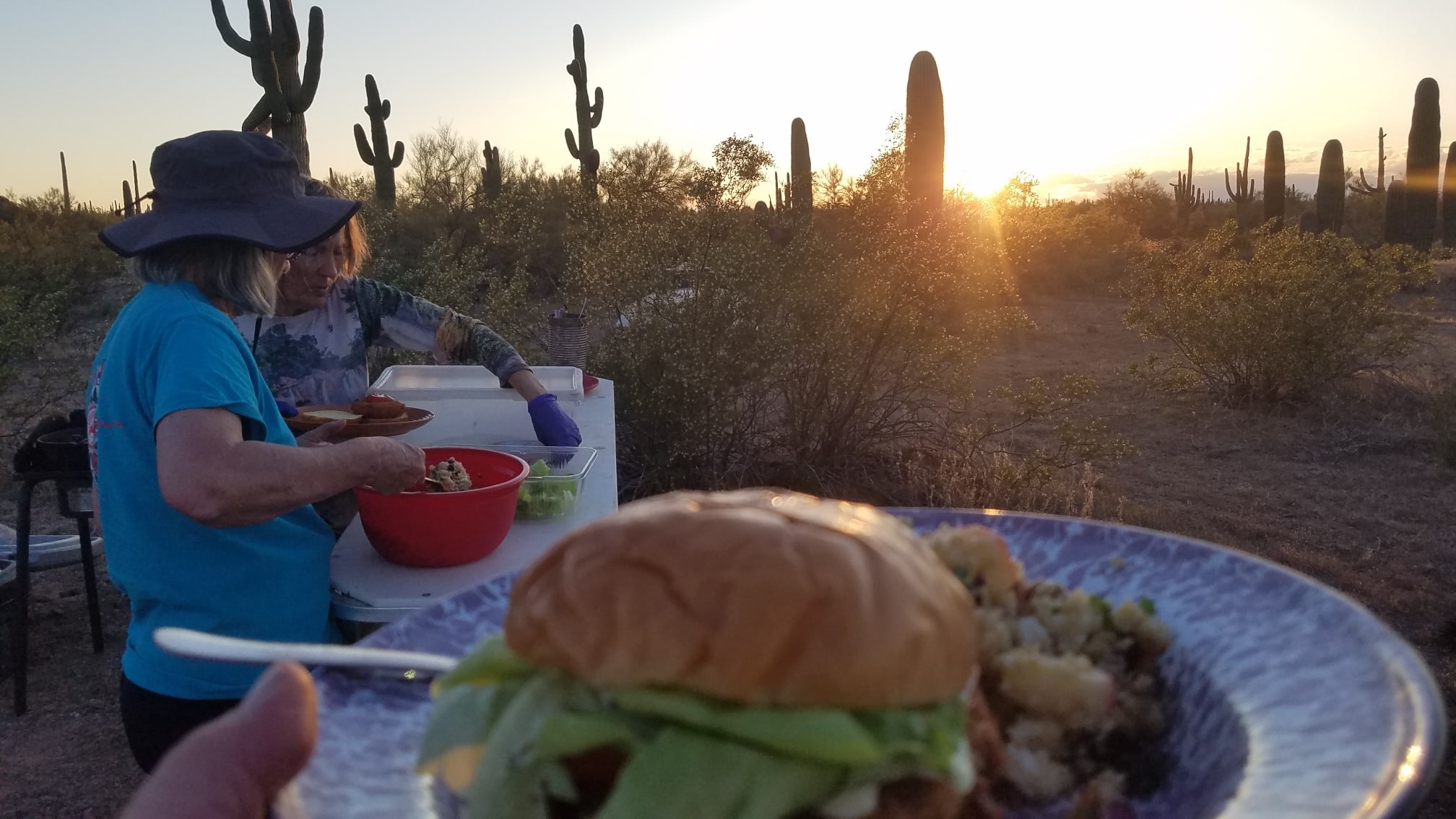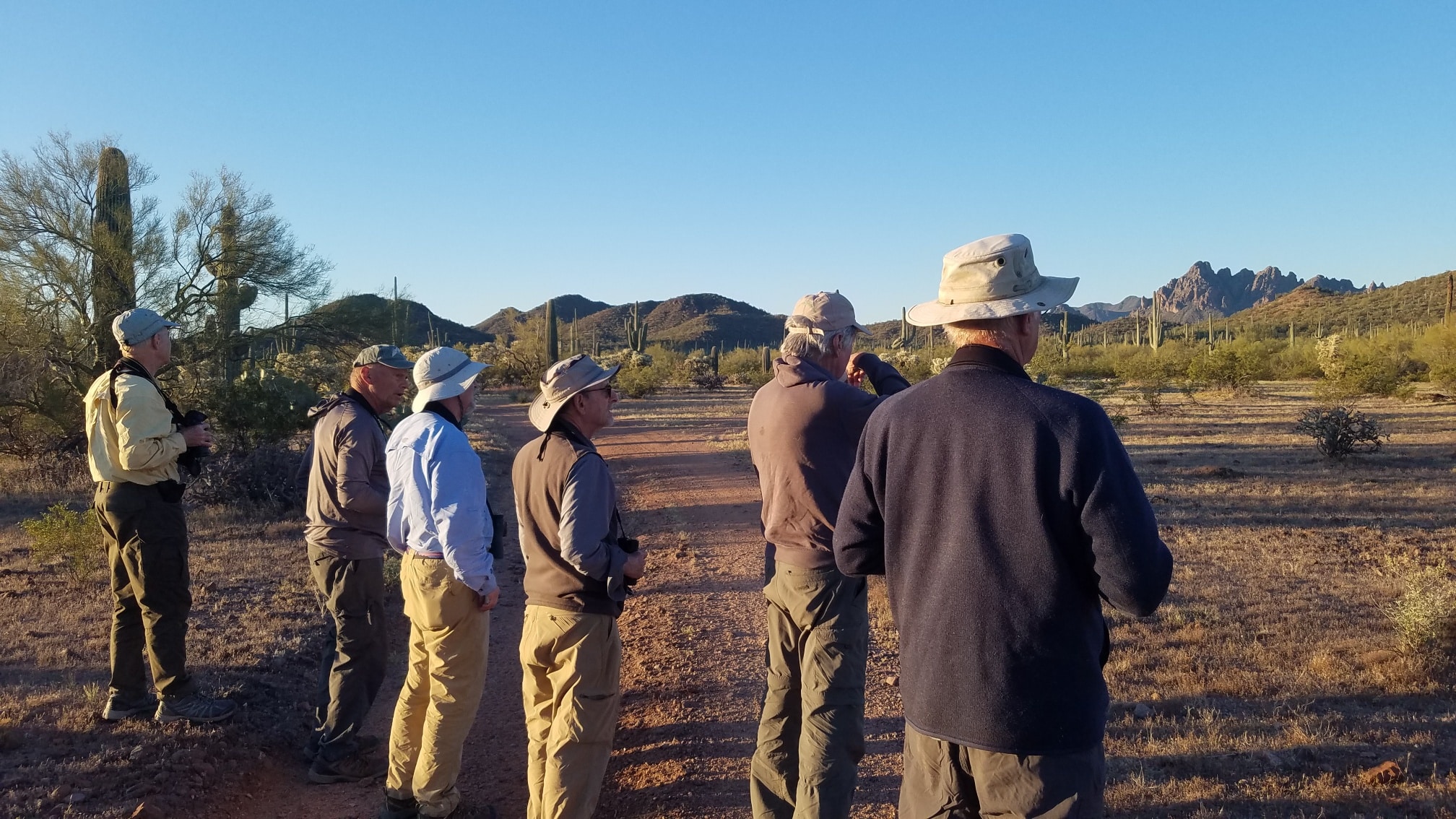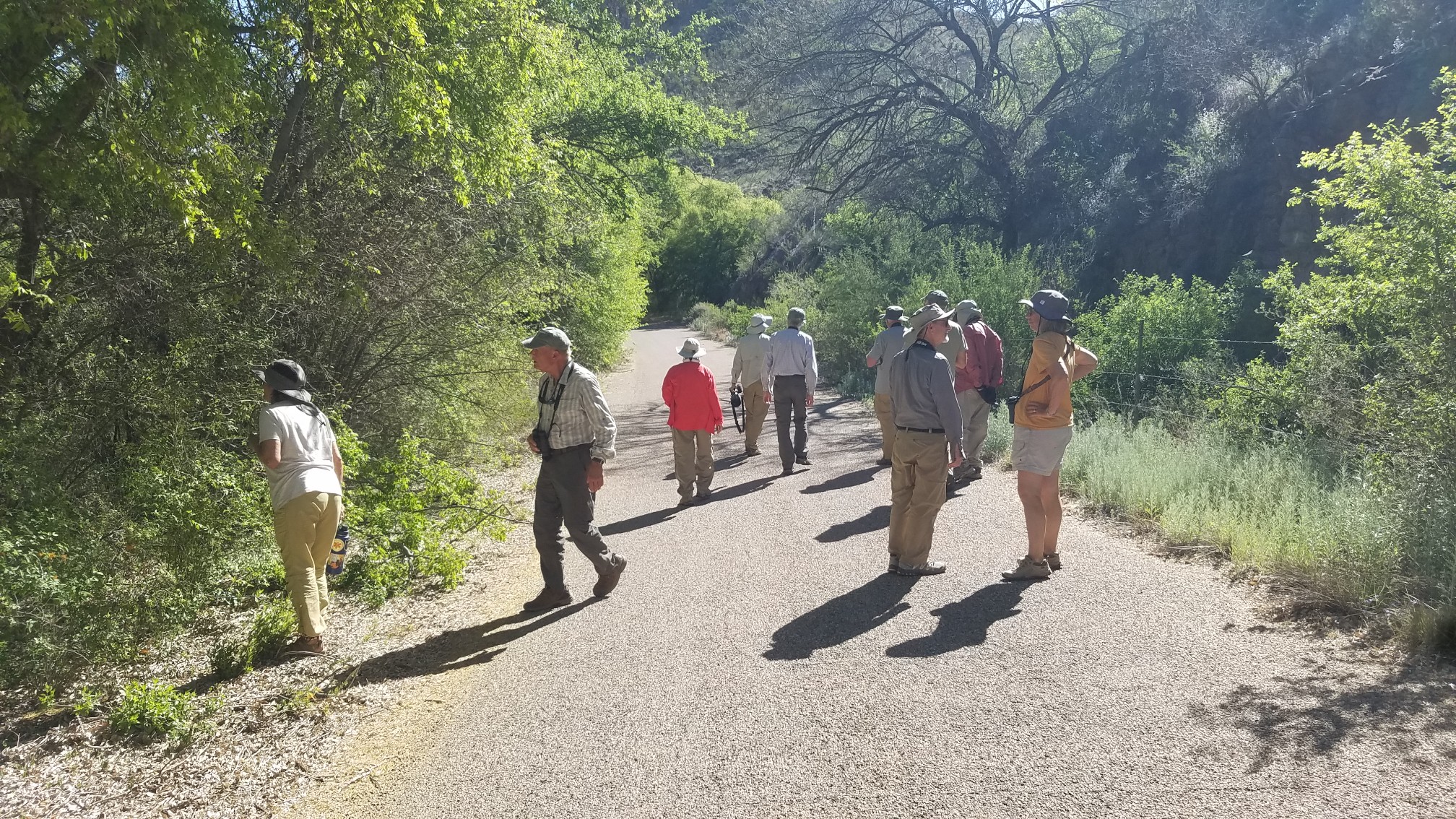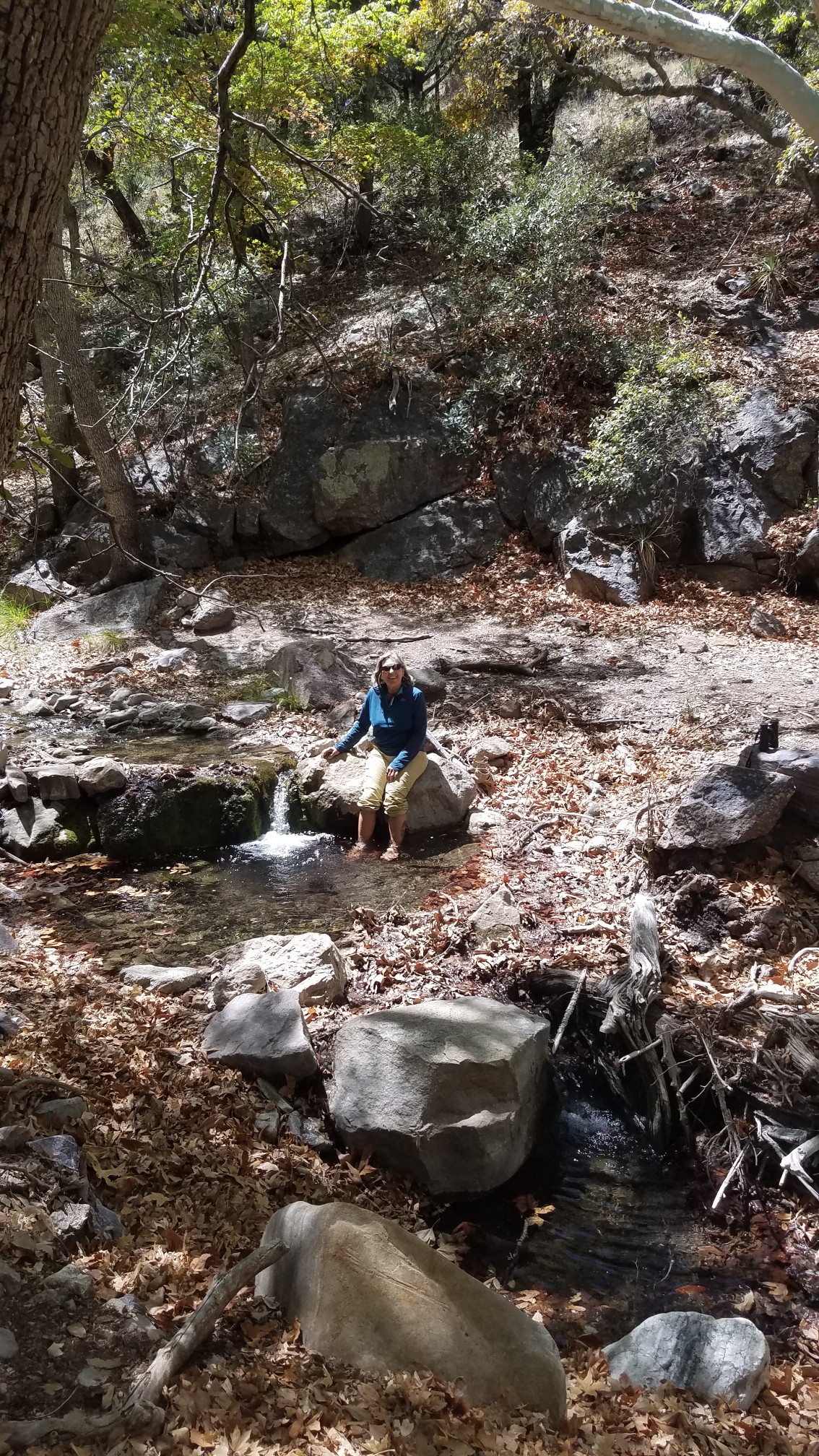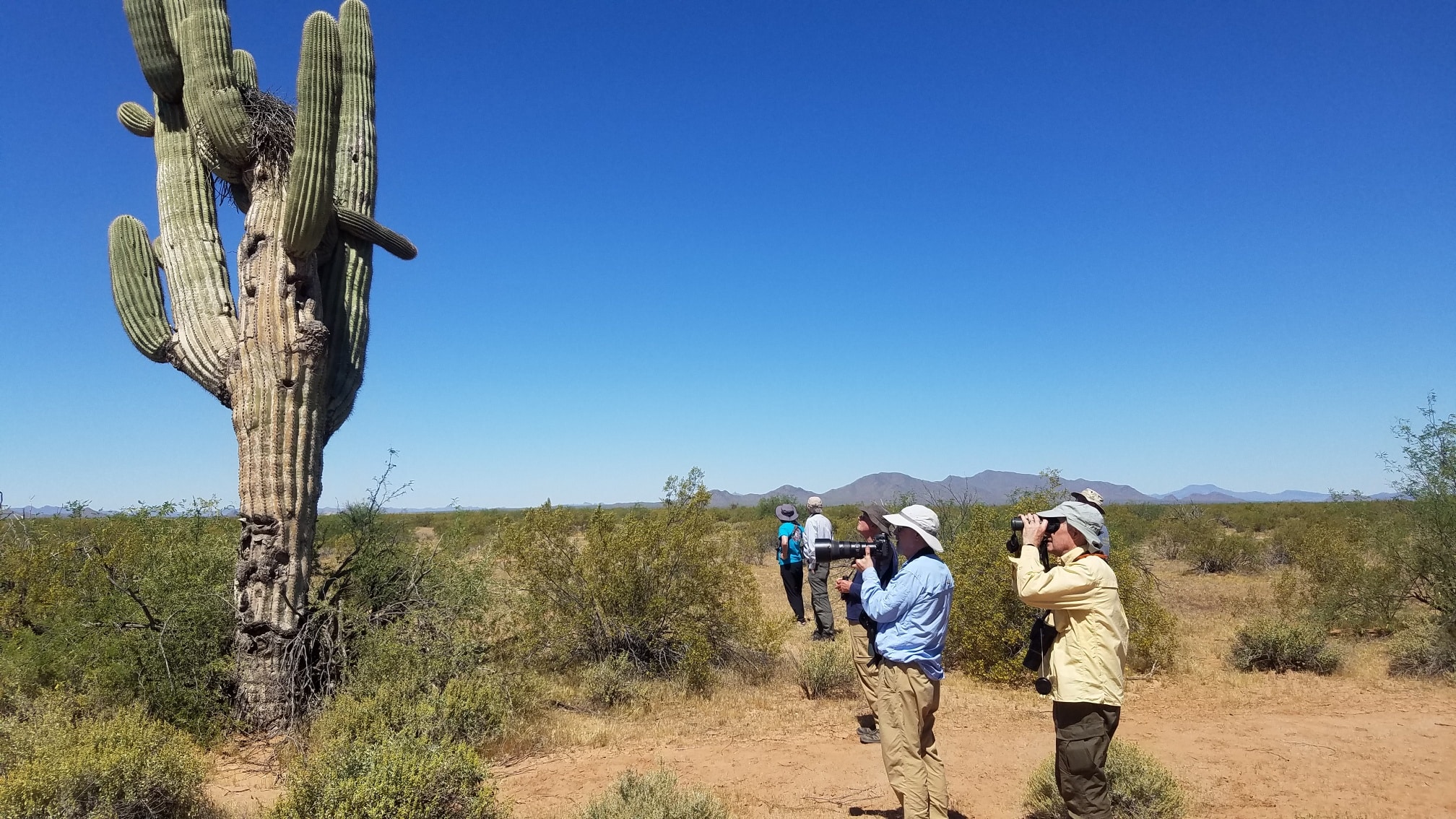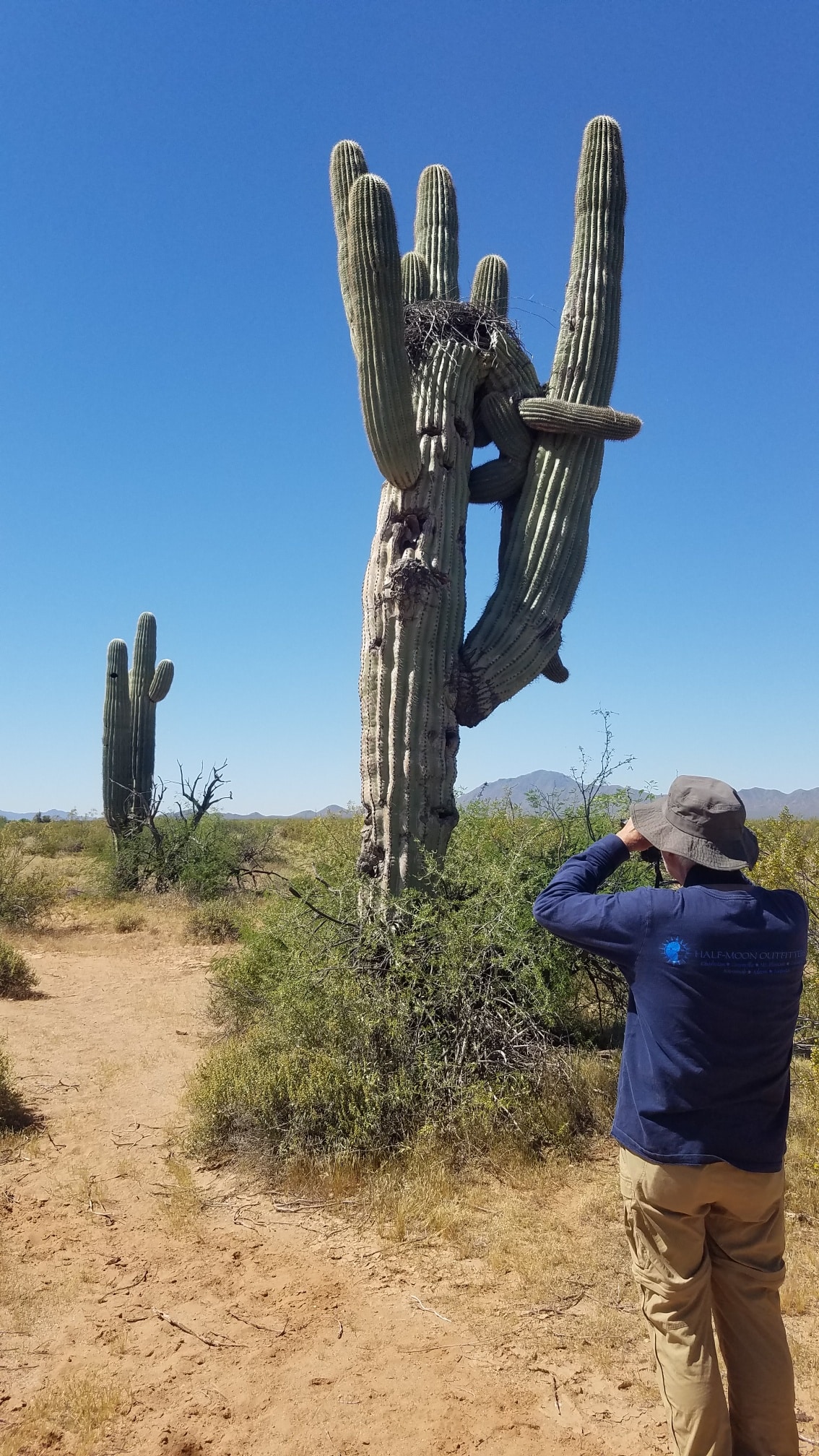Trek Details
Spring 2025 Itinerary
Flocks and Rocks 2025 Description
Cottonwood Gulch’s Flocks and Rocks adult trek (ages 21+) explores the natural sciences and history of the Southwestern US with expert scientists Dr. Arch McCallum (ornithologist) and Dr. Jack Oviatt (geologist). Over the past 10 years, Flocks and Rocks treks have visited NM, UT, AZ, and TX. During the trek, we hike and explore vast landscapes, check rare birds off of lifetime lists, climb interesting and picturesque rock formations, and visit archeological sites rich with local history and culture. By night, we gather around camp to share fun stories, great meals, and festive campfires. In 2025, the 10-day trek will start and end at the Phoenix International airport. We will journey deep into the saguaro heart of the Sonoran desert of southwestern AZ, then embark westward across Tatooine-like sand dune fields and saline lakes toward the Mojave desert, a new biome for Flocks and Rocks treks. The geological landscapes and biological niches in this region are best characterized by Fred Gehlbach in his book by the same name, “mountain islands and desert seas.” The 2025 Flocks and Rocks trek continues a westward journey with previous years’ treks to sites rich with ecological diversity along the US-Mexico border, and described by Fred in his book.
We will pick up participants from the Phoenix airport the morning of March 10th. We will travel to set up camp at Organ Pipe Cactus National Monument, a UNESCO biosphere reserve, and explore the nearby Cabeza Prieta National Wildlife Refuge. These locations are part of the Yuma Desert section of the Sonoran Desert, which is the only place in the United States where the senita and organ pipe cactus grow wild. We will look for bighorn sheep, and of course - birds! March is migration season in the Sonoran Desert, and birds we might see include the Hooded or Scott's Oriole, elf and other owls, warblers, swallows, flycatchers, phoebes, red-tailed and grey hawks, verdins, peregrine falcons, gambel’s quail, greater roadrunner, cactus wren, ducks, geese, tree swallows, red-winged blackbirds, Gila and ladder-backed woodpeckers, killdeer, blue grosbeaks, Bell’s vireos, and many more. We’ll drive along the Gila River to the Painted Rock Petroglyph Site, which hosts one of North America’s densest concentrations of petroglyphs made by ancestors of today’s Piipaash, O’odham, and Yavapai communities. This site is also an important place in the proposed Great Bend of the Gila National Monument.
Next, we will travel like Rick Madden’s song, back through “Geologic Time,” across the largest dune field in the US, the Algodones Dunes. This area was, in fact, the film location for Tatooine in Star Wars: Return of the Jedi. In this area, we will also visit the landlocked and highly saline Salton Sea, and the neighboring Anza-Borrego Desert State Park. These locations are part of the Colorado Desert section of the Sonoran Desert. Their landscapes represent the remnant environments of a vast Pleistocene lake, Lake Cahuilla. This ice-age lake formed in a rift basin that formed along the San Andreas fault zone. So, we will actually travel across a tectonic plate boundary between the North American and Pacific plates - another “first” for Flocks and Rocks! While in this area, we will try to catch a glimpse from one of the more exceptional fossil records of Pliocene and Pleistocene terrestrial fossils, including large mammal tracks and bones, plant fossils, and marine fossils including sea shells and teeth.
Finally, we complete our trek by traveling north to the higher and cooler Mojave Desert, which is the special habitat of Yucca brevifolia, the Joshua tree for which the national park we will camp at is named. The characteristic hilly landscape of barren rock are erosional features carved from the oldest rock in our road loop, the Pinto Gneiss, which may have been named for the people of the Pinto Culture, who lived and hunted there around 10,000 - 6,000 years ago. Common spring migrant birds include warblers, vireos, flycatchers, goldfinches, Western Tanagers, Lazuli Buntings, and hummingbirds, and year-round residents include the greater roadrunner, phainopepla, mockingbird, verdin, cactus wren, rock wren, mourning dove, and Gambel's quail. We’ll complete our trek at the tourist paradise Lake Havasu, a dammed reservoir of the Colorado River, where we’ll be a quick morning drive away from the Phoenix airport, where we should arrive by late morning.
Cottonwood Gulch provides administrative support and experienced educators and guides, who plan programs, review medical information, drive vehicles, provide cooked meals and beverages (including alcohol), and camping gear including tents and optional sleeping cots, bags, pads, and chairs. Participants are asked to review the packing list, itinerary, and provide relevant medical history, dietary restrictions, travel plans, and other pertinent information prior to the trip. Questions can be directed to development@cottonwoodgulch.org.
While the Gulch is most known for our work with youth, we believe more adults could benefit from getting out of the house and learning about their environment. Even those of us who are skilled outdoor adventurers often lack a critical element to our personal explorations: a seasoned and knowledgeable guide.
Flocks & Rocks Trek will be led by Arch McCallum, ornithologist, and Jack Oviatt, geologist, two PhDs in their respective fields, and longtime Gulchers.
“I was a cook for the Flocks & Rocks Trek, and I can say that I have never learned so much in a single 10-day span than those days with two enthusiastic PhDs and a posse of other adults that followed them around with binoculars and hand lenses."
As adults, I feel that we become accepting of what we know about the world, and comfortable with our own understandings. Much of the learning we have to do as adults is not fun–new practices at work, a new piece of technology, how to recover after an injury–but it doesn’t all have to be that mundane, boring, or scary. What if you could experience the childish wonder from when you were at the Gulch as a teen or learning about dinosaurs as a kindergartner?
After I finished up my responsibilities as a cook on that trip, I got to be a student again. The experience was set up for both avid birders, checking off birds from their life lists, and folks like me, who didn’t even realize there were birds around until I was asked to notice noises that had always blended into the background. On the geology side of things, we were introduced to terminology that gave us a better understanding of the prehistoric oceans we were walking through and took a step back to look at the glow of sunset on sandstone cliffs, a way even non-geologists can appreciate the stunning stratification.
We have all had to adapt to a different way of life over the last two years year, and as the world slowly begins to recover, don’t forget that we all have the right to wonder, and be blown away by our own learning.”
Expect lots of good stories, laughter around the evening campfire, and great food, too!
Resources for Families
Please send your completed participant forms to development@cottonwoodgulch.org
